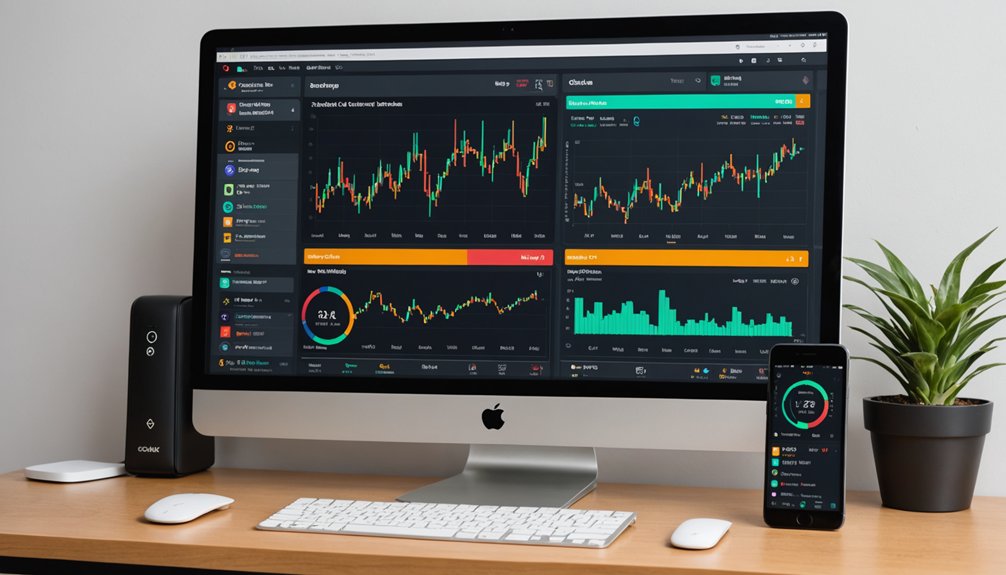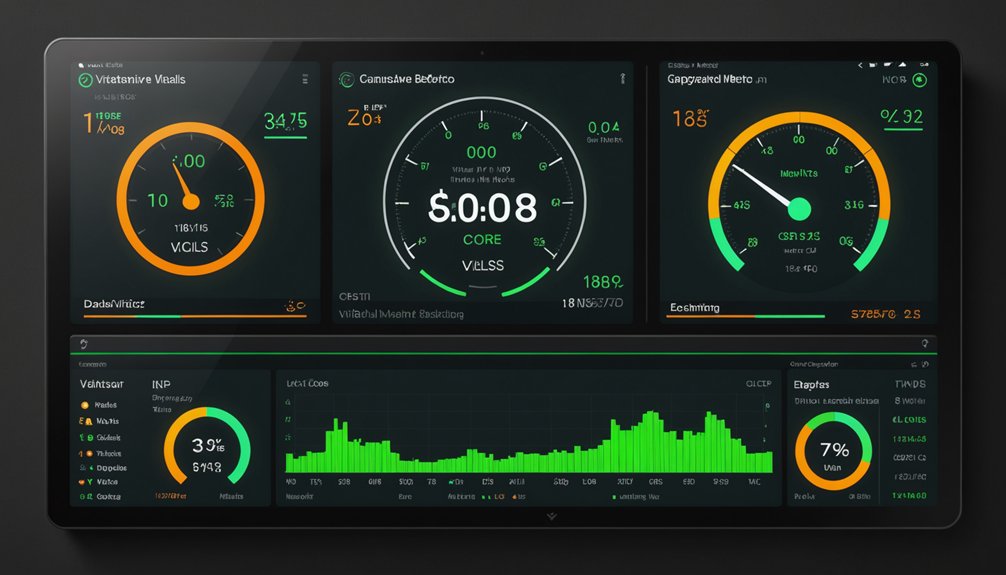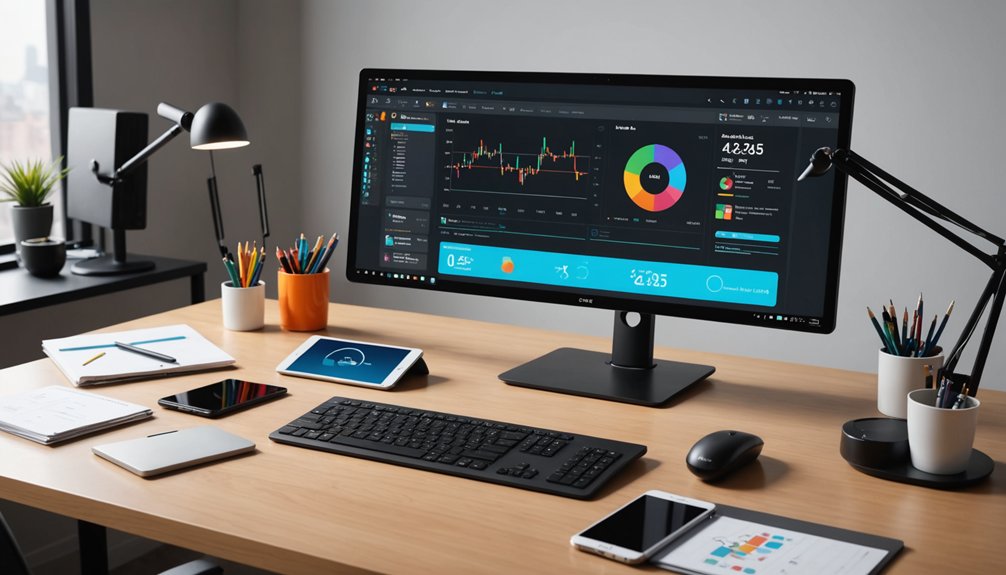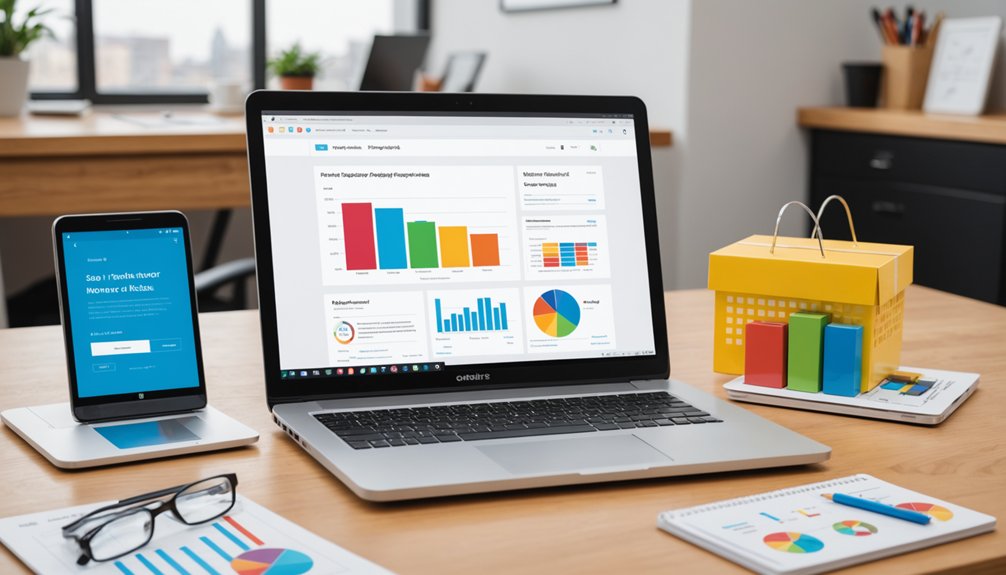Core Web Essentials will make or break SEO rankings by 2025. No joke. Google’s algorithms increasingly favor sites with fast load times, responsive interactions, and stable layouts. Poor performance? Watch your traffic nosedive. The competition’s fierce, and users bail on slow sites in seconds. AI-driven search results don’t care about your keyword stuffing if visitors bounce before engaging. Regular monitoring is non-negotiable. The technical details ahead might just save your digital visibility.

While many website owners focus on keywords and backlinks, Google’s algorithm has evolved beyond these traditional factors. Core Web Vitals now play an essential role in determining search rankings. These metrics measure real user experience—not just what Google’s crawlers see. They matter. A lot.
Core Web Vitals consist of three key metrics that directly impact your site’s performance in search results. Largest Contentful Paint (LCP) measures loading speed—specifically how quickly the main content appears. Under 2.5 seconds? Good. Over that? Users bounce. Simple as that.
The newly introduced Interaction to Next Paint (INP) replaced the older First Input Delay metric. It measures how responsive your site is when users click buttons or tap links. Nobody likes a laggy website. Nobody.
Cumulative Layout Shift (CLS) might be the most annoying experience for users. Ever clicked on something only to have the page jump and you hit an ad instead? That’s a high CLS score. Google hates it. Users hate it more.
By 2025, these metrics will become even more significant. AI-driven search results are prioritizing user experience over traditional SEO tactics. Think about it—what good is ranking first if users immediately leave your slow, jumpy site? Much like real-time analysis in content moderation, search engines constantly evaluate user interactions with your site. Similar to how quantum computing is revolutionizing data processing speeds, Core Web Vitals are transforming how search engines evaluate website performance.
The competition is fierce. Websites with poor Core Web Vitals scores are already seeing decreased traffic and lower rankings. It’s not rocket science. Fast, stable, responsive sites win. Period.
Field data collection means Google isn’t just testing your site once—they’re watching how it performs with real users all the time. One good day won’t cut it. Consistency counts.
The cold, hard truth? In 2025’s SEO landscape, Core Web Vitals won’t just be a ranking factor—they’ll be a survival factor. Your beautifully optimized content won’t matter if nobody sticks around long enough to read it. Fix your essentials or fade into search obscurity. The choice is yours.
Improving your Core Web Vitals often requires technical optimizations like proper image compression, code reduction, and upgrading to faster hosting options that can dramatically improve your site’s performance metrics. Regularly monitoring your metrics with PageSpeed Insights will help you identify issues before they impact your rankings.
Frequently Asked Questions
Will Core Web Vitals Replace Traditional Ranking Factors?
Core Web Vitals won’t replace traditional ranking factors. No way.
They’re just part of Google’s bigger picture—complementing, not substituting the classics. Content quality and relevance? Still king.
Core Web Vitals are the new kids on the block, focusing on user experience. They are important, sure.
But Google’s algorithm needs both to function properly. It’s a partnership, not a takeover.
Think of Web Vitals as seasoning on your perfectly cooked SEO steak.
How Often Should I Audit My Site’s Core Web Vitals?
The ideal audit frequency for Core Web Essentials? Monthly at minimum.
Serious sites check weekly. Period.
After major site updates? Audit immediately. Non-negotiable.
Traffic spikes coming? Better check those essentials first.
Google’s algorithm updates demand closer monitoring.
Smart webmasters set performance benchmarks and adjust audit schedules accordingly.
Continuous monitoring tools exist for a reason.
The data doesn’t lie.
Sites that neglect regular auditing fall behind competitors. Simple as that.
Do Core Web Vitals Affect Mobile Rankings Differently Than Desktop?
Yes, Core Web Essentials absolutely affect mobile and desktop rankings differently.
Google evaluates them separately. Simple as that.
In 2025’s SEO landscape, your site needs to meet the standards on both platforms independently.
Mobile optimization? Crucial. Everyone’s on their phones these days.
Poor mobile performance will tank your visibility there, while desktop issues hurt desktop rankings.
The metrics are the same – LCP, FID, CLS – but the evaluation is platform-specific.
No shortcuts around this one.
Can Improved Core Web Vitals Recover From Algorithm Penalties?
Improved Core Web Essentials can absolutely help sites recover from algorithm penalties.
It’s not magic, though. When websites fix poor user experience metrics—faster loading times, better interactivity, reduced layout shifts—they’re addressing exactly what Google wants.
Recovery depends on the specific penalty type. Some sites see ranking boosts within weeks; others take months. The competitive landscape matters too. If competitors have stellar metrics, just meeting the minimum won’t cut it.
Continuous improvement is key.
Which Industries See the Biggest Ranking Impact From Core Web Vitals?
E-commerce faces the biggest impact from Core Web Vitals. Poor scores tank sales, period.
Technology and finance industries aren’t far behind—users expect lightning-fast interactions and stable layouts when handling sensitive information.
Healthcare benefits too, but content relevance still trumps speed there.
For home improvement sites, visual stability matters greatly—nobody wants shifting images when browsing renovation ideas.
The pattern’s clear: transaction-focused industries suffer most when sites perform poorly. Users hate waiting, especially when money’s involved.




